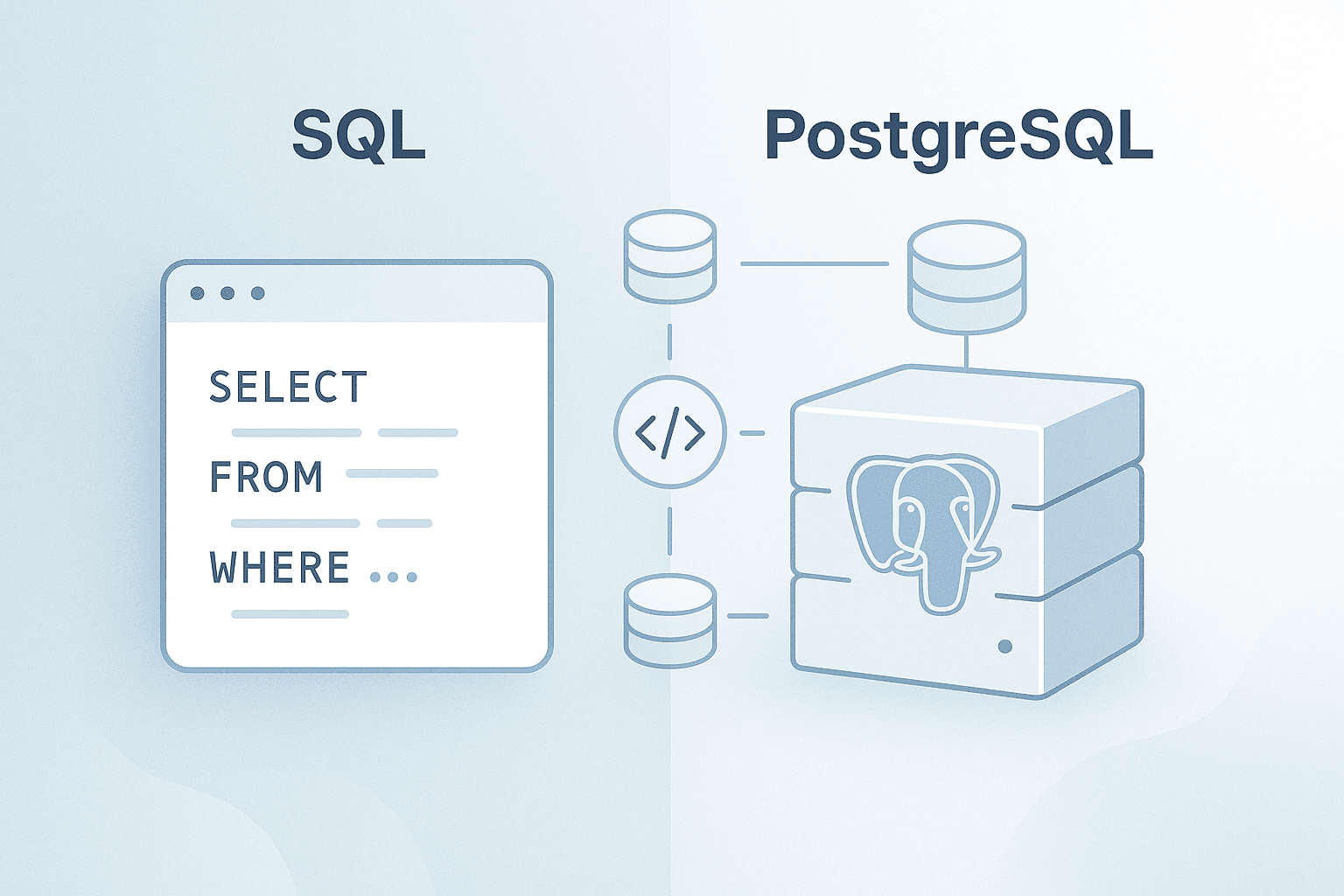All Blogs
SQL vs PostgreSQL What's the Real Difference?


SQL vs PostgreSQL: What's the Real Difference?
In the modern tech landscape, databases are the backbone of most applications. Whether you're managing a simple to-do list or building a high-traffic web app, understanding how data is stored and accessed is essential. Among the most commonly referenced terms in the database world are SQL and PostgreSQL. While they sound similar, they represent different concepts — one is a language, and the other is a database system.
In this article, we'll break down what SQL and PostgreSQL are, how they relate to each other, and what sets them apart.
What is SQL?
SQL (Structured Query Language) is a standardized programming language used to manage and manipulate data in relational databases. It provides the syntax for performing all kinds of database operations — such as retrieving data, inserting new records, updating existing ones, and deleting unwanted data.
For example, using SQL you can:
- Create database schemas and define tables
- Insert, update, and delete data
- Query and filter records using conditions
- Join data across multiple tables
- Manage user permissions and security
SQL is used across many popular database systems, including MySQL, SQL Server, Oracle, SQLite, and PostgreSQL. Despite variations in implementation, the core language structure remains largely consistent.
Here's a quick example:
SELECT name FROM employees WHERE department = 'Engineering';
This line of SQL retrieves the names of employees from the "Engineering" department — a simple, human-readable command that showcases the power of SQL in managing data.
What is PostgreSQL?
PostgreSQL is a powerful, open-source relational database management system (RDBMS) that uses SQL as its primary query language. It is known for its robustness, advanced features, and strict adherence to SQL standards — often going beyond those standards with cutting-edge capabilities.
PostgreSQL is not just another SQL-based database. It's a highly extensible system that supports custom data types, functions, and even procedural programming languages like PL/pgSQL. It also offers built-in support for JSON, full-text search, geospatial queries (through PostGIS), and more.
PostgreSQL is trusted by large enterprises and startups alike for its ability to handle large volumes of data, ensure data integrity, and scale effectively under heavy workloads.
What's the Difference Between SQL and PostgreSQL?
The difference between SQL and PostgreSQL lies in their nature and roles in the database ecosystem.
SQL is a language, not a product. It's a set of rules and syntax used to communicate with relational databases. Think of it as the vocabulary and grammar used to ask questions and give commands to databases.
PostgreSQL, on the other hand, is a database system — a software application that uses SQL to store, retrieve, and manage data. It not only supports the SQL language but also expands upon it with many additional capabilities that are not part of the SQL standard.
So, when you use PostgreSQL, you are writing SQL queries — but you're doing so within a specific database engine that offers its own enhancements and optimizations.
A Simple Analogy
To make it even clearer, think of SQL as the English language, and PostgreSQL as a bestselling novel written in English. The language (SQL) is what allows you to write, but PostgreSQL is the platform where those words come to life, offering features like formatting, structure, and content beyond just grammar.
Conclusion
To sum it up:
- SQL is the language used to query and manipulate data in relational databases.
- PostgreSQL is a specific, advanced, and open-source database system that uses SQL — and adds powerful features on top of it.
- SQL is universal across many systems, while PostgreSQL is one of the most advanced implementations of that language.
Understanding this difference is crucial whether you're learning the basics of databases or building complex, production-grade applications. SQL gives you the vocabulary — PostgreSQL gives you the platform to apply it at scale, with flexibility and power.
About the Author

